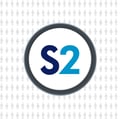From road and bridge construction to smart grids and EV charging network maintenance, utility and infrastructure companies are having a hard time staffing to meet rising demand. But even for those managing to fill positions, another challenge remains: How can they scale hiring efforts up or down quickly, based on fluctuating demand?
For utility and infrastructure companies of all kinds, periods of higher demand come and go. Some fluctuations are predictable based on seasonality and other factors (Higher demand for utility field technicians during storm, fire or tornado season, for instance); others, not so much (say, an unexpected new job). To be successful in a market where hiring is already a challenge, organizations need agile, technology-driven recruiting and onboarding processes.
Leveraging recruiting tech for more agile utility and infrastructure hiring
When demand for resources spikes, traditional recruiting processes buckle under the pressure. To scale up or down quickly, utility and infrastructure companies must rely on technology. This allows internal recruiting teams to increase the volume of their staffing activities with little to no extra manual work.
Applicant Tracking Systems (ATS)
Organizations with large-scale hiring needs already know that Applicant Tracking Systems (ATS) are a must-have. But are they getting the most out of their ATS investment? The latest ATS platforms and features answer the needs of talent acquisition stakeholders to do more than keep tabs on candidates in their recruitment workflow. For example:
- Streamline the writing, posting, and management of job listings with the help of AI
- Sourcing and screening technology can enable efficiencies for recruiters to quickly hone in on the best-match candidates
- Automated candidate outreach and correspondence with CRM-like functionality to save time
- Powerful open APIs to seamlessly integrate with recruitment technology solutions from specialized vendors
Automated Video Interviewing (AVI)
While it might seem like something from a science fiction movie, some large organizations are now using AI to interview and assess candidates. On the simple end of the spectrum, hiring teams can automatically trigger candidates to schedule interviews via an AVI system, in which their interview answers are recorded and delivered to hiring teams to watch and assess on their schedule. This eliminates the time-consuming back-and-forth of interview scheduling and no-show situations.
On the other end of the spectrum, some AVI systems actually use AI and machine learning to assess candidate answers and test performance with a percentage-match score to help recruiters decide if candidates should move to the next round.
These types of AI-assisted or AI-led technologies can exponentially increase the number of candidates that can be screened in a given time. But while managers and talent acquisition leaders want to spend less time and money on the screening process, candidates still need human feedback along the way. That’s why the providers of these technologies often note that organizations need a careful balance of human interaction and automation to be successful. Relying solely on automation, they say, typically results in a lower completion/conversion rate during the interview or assessment process.
By merging technology and a human touch, organizations can streamline the process and improve efficiencies—while also ensuring that candidates have a positive experience.
VR, AR and other immersive tech for recruiting and skills assessment
As immersive technologies (from Virtual and Augmented Reality to interactive online experiences) continue to evolve, hiring teams should think about how they can use them in recruiting and screening. A few ideas:
- Utilities and infrastructure companies who may be having trouble attracting young talent can use immersive experiences to automate the process of “selling” themselves to potential new hires. For example, candidates could experience the highlights of a day on the job or see facilities, equipment and locations virtually.
- For skilled laborers, automated, virtual skills assessments save utility and infrastructure companies significant time during the screening process. For example, candidates could face virtual challenges in which they must service/work with the equipment they’ll see in the field.
- Employers can even use gamification elements (point systems, leaderboards, etc.) to engage candidates and recent new hires. This helps boost retention in the interview process and the first weeks on the job (which can be a challenge for utility and infrastructure companies).
Analytics for predictive hiring
Even for demand fluctuations that are hard to predict, technology can provide an edge. Predictive analytics programs use AI and machine learning to help anticipate future staffing requirements. Assessments take into account historical data, market conditions and other customizable factors that could affect hiring needs. This can help internal and external teams better plan for when and how to ramp up recruiting efforts.
RPO helps utility and infrastructure companies manage fluctuating needs
Many large companies in the utility and infrastructure segments already use recruiting or staffing partners. Oftentimes, however, these firms take a reactive approach—rushing to find warm bodies to fill open positions only after the need arises. Recruitment Process Outsourcing (RPO) partners, on the other hand, can help you be more proactive and agile with strategic, tech-driven process implementation.
Best of all, an RPO provider operates as an extension of your recruiting team—from working collaboratively with internal teams on process design to helping manage the full recruiting, hiring and onboarding funnel. Simply put, RPO is designed to be strategic and relationship-oriented, not transactional. Thanks to a focus on cutting-edge tech and continuous process improvement, it’s designed to work successfully at scale—helping you lower recruiting, staffing and retention costs.
Source2 is a leading RPO provider with extensive experience in the utility and infrastructure segments—and the inside knowledge to be a true extension of your internal team. Contact us today to see how we can customize a service that meets your recruiting needs.
Tags:

Aug 2, 2023 6:14:13 PM
